The mini-hydro system at Majaua-Maia, Milange district, Zambézia province
Majaua-Maia
25 August 2014
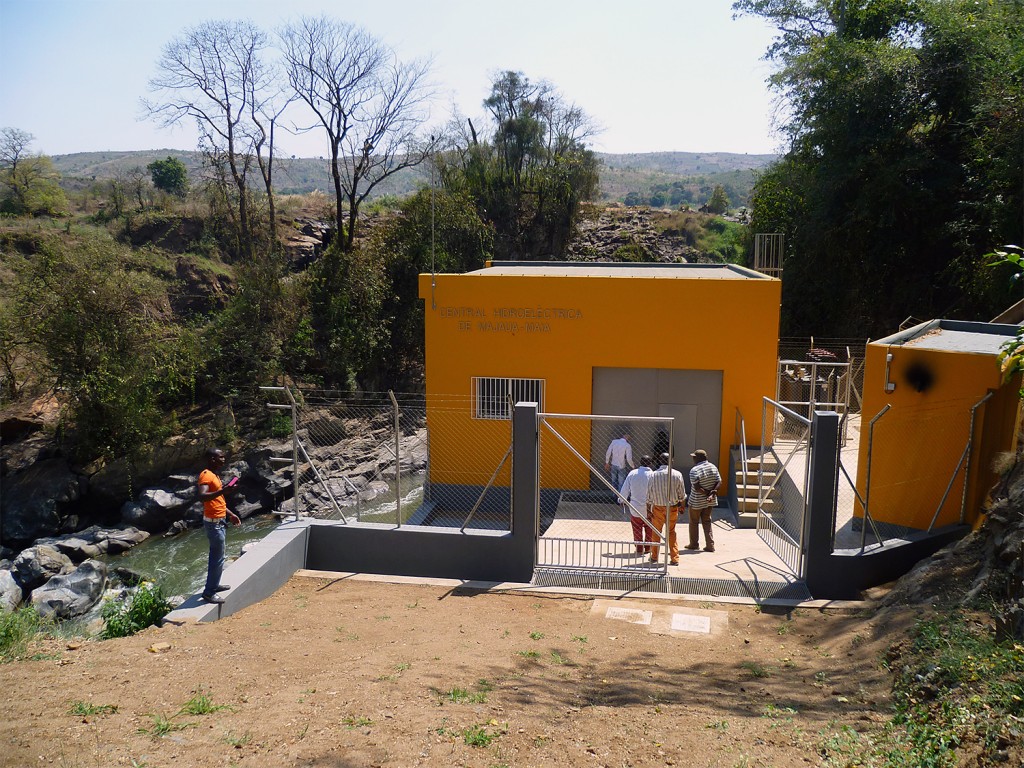
I recently spent four weeks observing several small-scale renewable energy projects in Mozambique. As part of the Rising Powers project, I accompanied two consultants from the Harare office of the NGO Practical Action and the director of a local NGO in central Mozambique, Kwaedza Simukai Manica (KSM). One of the most interesting projects we visited was the rehabilitation of a small-scale hydro system in Zambézia province, in the central region of the country.
In Majaua-Maia, a village in Milange district, Zambézia, Mozambique’s National Energy Fund (Fundo de Energia, FUNAE) has set up a 767 kV mini hydro scheme. Inaugurated in 2013, the project is funded by the European Union at a cost of €2.5 million. Once fully operational, FUNAE claims it will be the largest decentralised mini-grid in southern Africa. FUNAE and the EU awarded the tender for this project to CANAS, a Portuguese contracting firm.
The project broadly aims to improve the living conditions of Majaua residents by offering access to electricity, which was previously lacking in the village. Specifically, the project involved rehabilitating a mini-hydro scheme that was used to power a small fazenda (farm and mill) beginning in the mid-1960s, owned by a Portuguese man named Maia (the nearby village is partly named for him). Senhor Maia reportedly abandoned the fazenda in 1980 due to the strife from Mozambique’s 16-year civil war. The main house (casa grande)—a concrete and blue-tiled Portuguese-style country villa—fell into ruin. The mini-hydro system was not maintained, and villagers were left without any source of electricity.
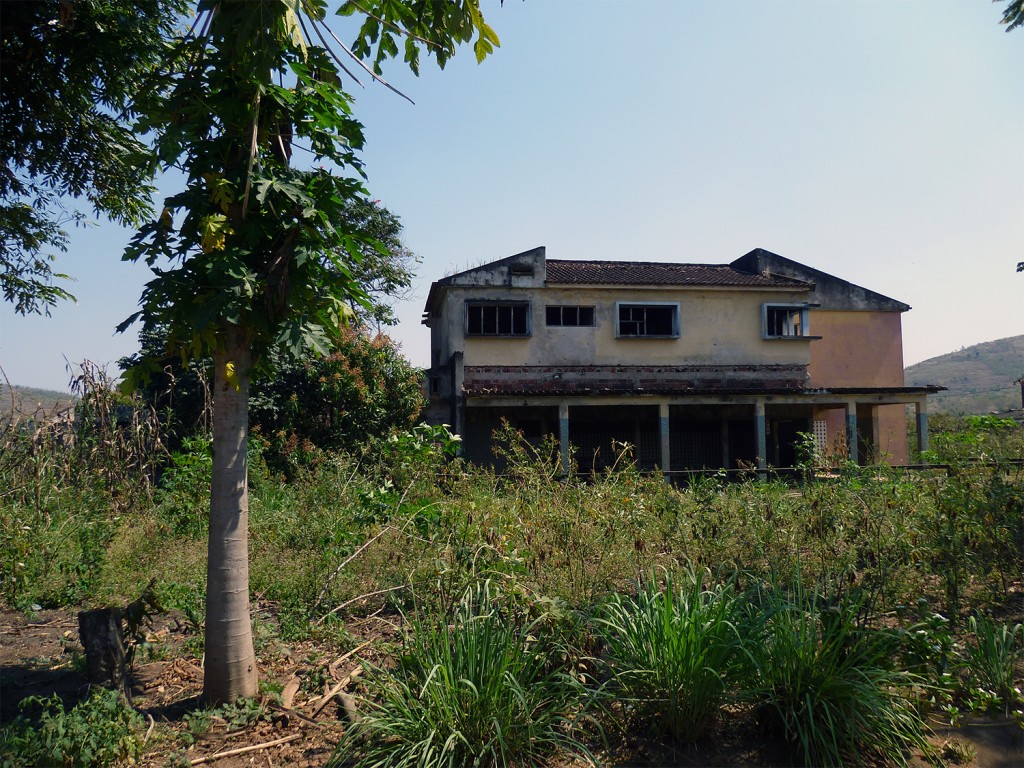
Amid growing interest in the potential of small-scale hydro systems to offer renewable and low carbon sources of energy in off-grid sites, FUNAE’s project in Majaua-Maia intends to benefit 20,000 residents (or 5,000 households) in six surrounding villages, including three primary schools, one health clinic and six grinding mills. Majaua-Maia was a good three-hour drive from the district capital, Milange, on rutted dirt roads.
Technical specifications
The Majaua-Maia mini-hydro scheme is located on the Ruo River, a tributary of the Shire River, which forms a border with Malawi. The ‘net head’ is 15 metres and the flow rate is 4m3/min. Canas installed a cross-flow turbine made by Ossberger, a German company. The generator is Portuguese, made by Effacek. In a previous conversation with Canas director, Walter Canas, in Maputo, I learned that the turbine sat in a customs terminal at the Beira port for over a year before they were allowed to bring it into the country. The expected annual power production is 3,500 MWh/year. The first phase of the project has set up a 4km high voltage line, and the next phase will extend this network out to 40 km; this second phase is currently under construction.
All houses, schools, health centre and several small shops along the 4 km line are now connected. Each household has one light bulb and one point for power connection. Households and shopkeepers are not currently paying for electricity, as the project is in a ‘test phase,’ according to local residents and FUNAE’s director for Zambézia province, Senhor Jose Quelhes. As yet, there is no metering or billing system for electricity consumption.
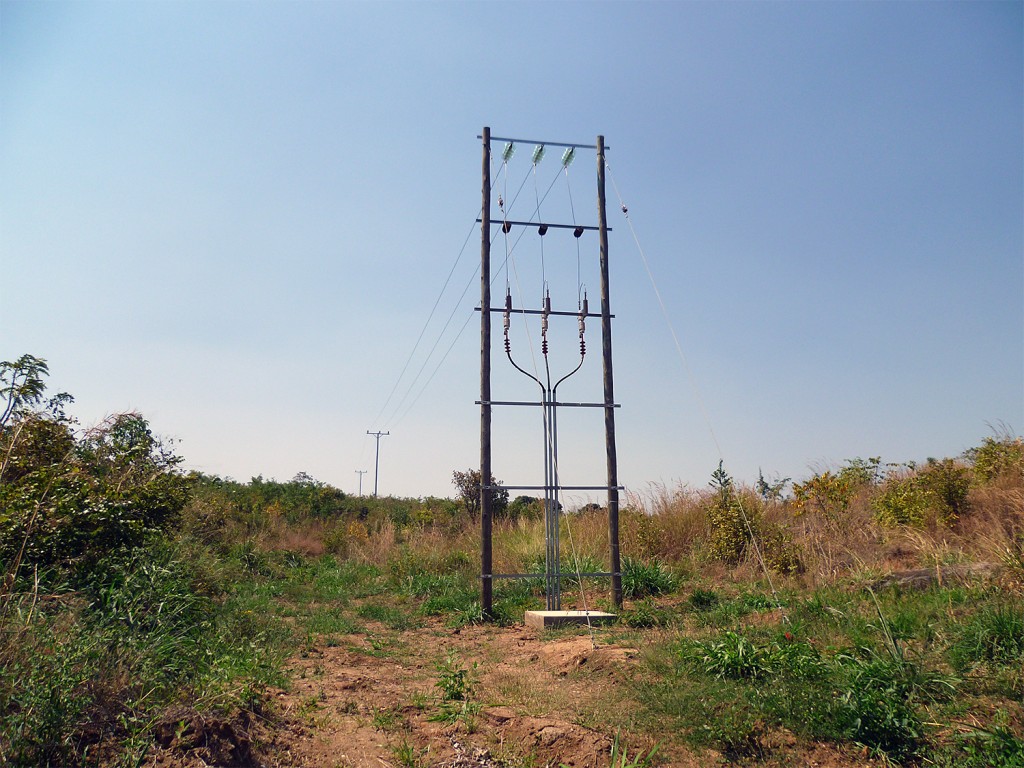
Ownership, energy access and local participation
Senhor Qhelhes explained the mini-hydro scheme at Majaua-Maia is owned and operated by FUNAE. During the construction phase, most of the engineering inputs were sourced from Portugal, with limited involvement from Mozambicans. The contractors employed workers from Maputo, along with some local labourers in constructing the powerhouse and setting up the mini-grid. Technically, the system is very advanced, with state-of-the-art, imported equipment. The powerhouse is a large, sturdy and imposing structure, painted bright orange.
In addition to focusing on energy access, as FUNAE does, our research pointed to the importance of an energy supply option that is geared to the community’s current and long-term needs. The Majau-Maia project, however, showed signs that a community-focused needs assessment was lacking and local participation was minimal. The most glaring instance of this was that several local grinding mills were not connected to the decentralised mini-grid during our visit. Powering these mills for grinding cornmeal is a major priority, especially for local women. The cornmeal is used for making xima, a staple food in the region. As noted above, Majaua-Maia sits on the Ruo, a river forming a border with Malawi. Local women must cross the river into Malawi to grind their corn at a mill powered by diesel generator. There is no bridge, and they must wade across, often with children in tow. FUNAE intends to connect the local mill to the mini-grid, but this had not yet happened at the time of our visit, raising questions about whose needs were being prioritised.
Furthermore, the project fiscal (supervisor) who we spoke to, Senhor Sala, was from Beira, and his two young assistants were from Nampula and Quelimane (regional urban centres). As Lasten Mika observed, this was perhaps a missed opportunity to train local youth to take up such positions, fostering local involvement. Local youth might be more invested in the project than those from regional centres, who might not stay in Majaua for long. There is a high likelihood that the operators will be recruited from Maputo, Beira and Quelimane, which might not be sustainable, as it will be difficult to attract skilled personnel to this isolated community with poor roads.
In terms of local uses of the electricity, we observed three video clubs in the village showing movies, mainly Jackie Chan films dubbed in Chichewa (the predominant language in Malawi and also spoken in Majaua-Maia village). None was charging any admission fee. They were mostly frequented by young kids, boys and girls. We also heard several sound systems vying for attention where several small shops were clustered. Here we ate lunch in a small thatched hut, where a woman served bowls of xima with goat meat and sliced greens (for about 50 cents a plate). We had to change some Mozambican meticais into Malawi kwacha to pay for this meal, suggesting the cultural proximity to Malawi. Returning to the shops, I noticed only one had a refrigerator. I bought a bottle of coke to wash down lunch, and saw that the shopkeeper had a desktop computer and was in the midst of burning music CDs or videos.
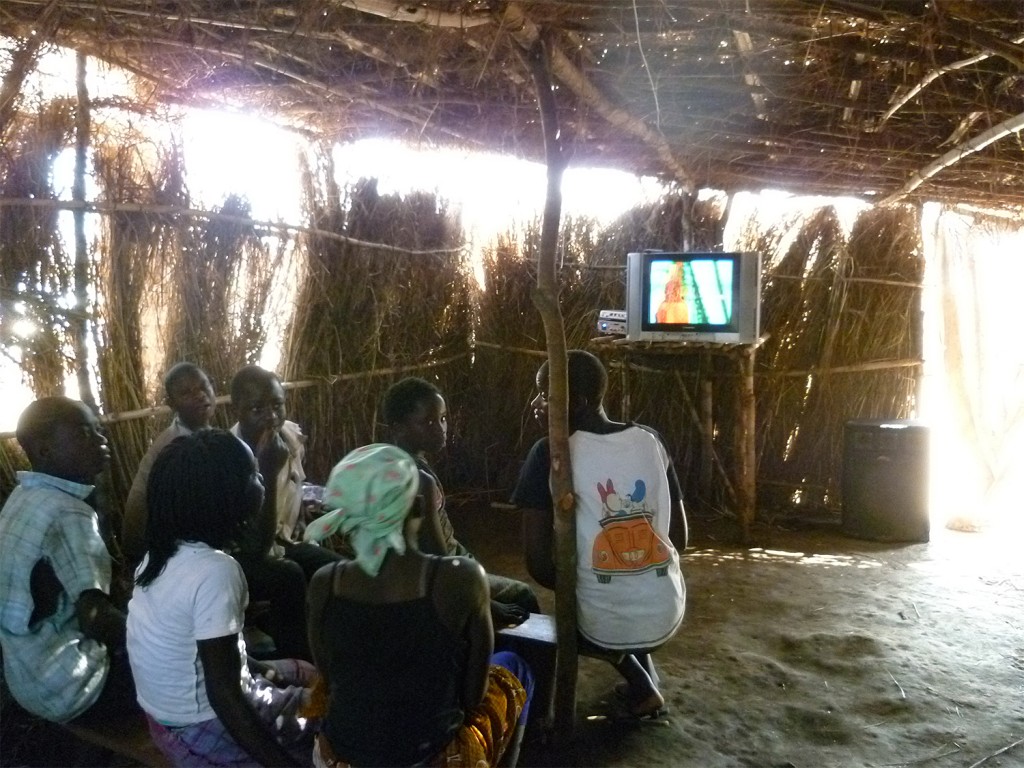
In this project, as in others we observed, FUNAE has provided access to electricity to people who previously didn’t have it. But there seems to be little capacity-building offered for new users regarding what they could do with the power. Emphasis is placed on lighting and phone charging, but less on productive activities, such as supporting new enterprises and developing skills. It seems important to consider economic opportunities opened up by the new energy source, such as milling, welding of tools, or vehicle repair. One household was distilling liquor from corn and sugarcane, but this did not require electricity. During the visit, we saw very small houses with just one incandescent light bulb. According to our interviews, most households continue to cook with charcoal and firewood, as they lack appliances to cook with electricity or gas.
As noted above, the electricity consumers in Majaua do not have meters installed in their houses or shops, so they currently experience free electricity. It may be difficult for FUNAE to introduce a tariff system at some stage, raising the issue of willingness and ability to pay. Payment mechanisms, such as electricity metres, had not been tested. It is unclear if FUNAE conducted a market study, and if those who cannot pay will be disconnected.
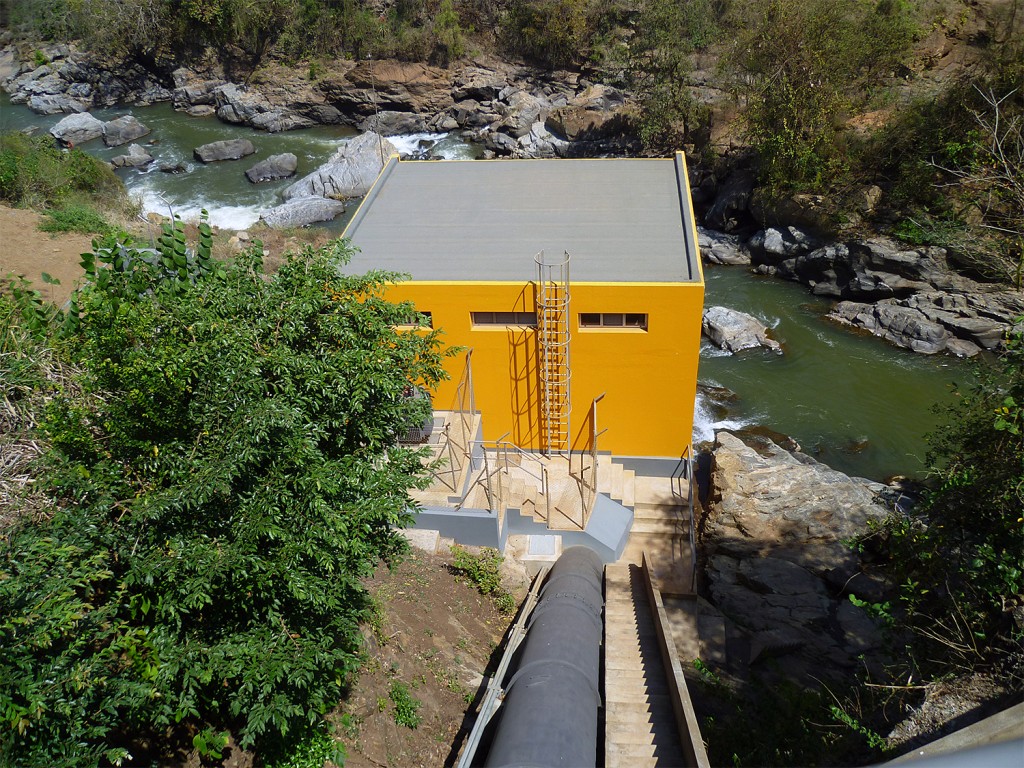
When successfully commissioned, the mini-hydro power plant at Majaua-Maia will claim to be one of the leading decentralized mini grid system within the southern African region. The project clearly has a lot of potential, but it would help if local people had a better understanding of it and more ways to communicate their needs and aspirations for uses of the technology.